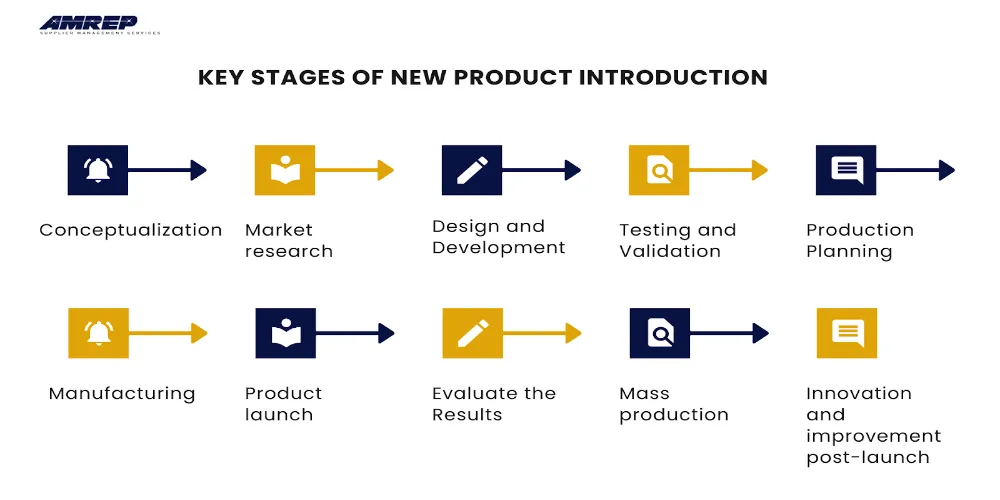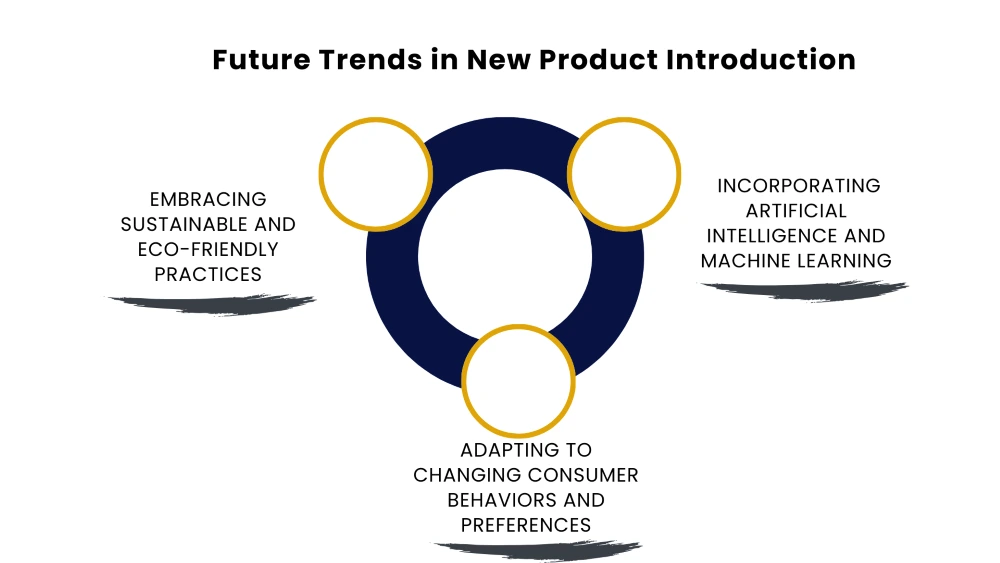What is a Layered Process Audit?
Layered Process Audit is a quality tool designed specifically for manufacturing management. It is meant for auditing organizational processes ...
By AMREP | Posted on February 14, 2024
New Product Introduction (NPI) is the process of taking a product from the initial concept stage through to mass production and commercialization. The process involves a set of activities to define, develop, test, optimize, and launch the product. The process can be viewed from the perspective of manufacturing or from the perspective of the whole organization. The process aims to reduce waste, avoid miscommunication, speed up production, and save money. The process can be applied to tangible or intangible products. It is widely used by major OEMs.
NPI is important for any business that wants to successfully manufacture its products. NPI sets out a process for creating new products that can satisfy the customer needs, solve their problems, and excite them with unique features and benefits. In the manufacturing context, NPI is essential as it sets out a specific method for ensuring that manufacturing processes are properly set up and validated to successfully produce the new product.
NPI is a complex domain where you can have engineers that specialize solely in this field. It typically involves the product design, engineering, manufacturing, testing, quality management, and project management teams.
Successfully bringing a product online, and being able to produce the right product, at the right time, and the right cost, are probably the most complex parts of product manufacturing.


The five key stages of new product introduction are:
Each stage has its own challenges and best practices, which we will discuss in detail in the following sections.
The world is changing fast, and so are the expectations and demands of consumers. To succeed in the competitive market, businesses need to keep up with the latest trends and innovations in product development. Here are some of the future trends that will shape the way products are developed and launched in the coming years:

Consumers are becoming more aware and concerned about the environmental impact of their consumption choices. They are looking for products that are not only functional and attractive, but also eco-friendly and socially responsible. According to a survey by McKinsey, 67% of consumers consider the use of sustainable materials to be an important purchasing factor. Therefore, businesses need to adopt sustainable and eco-friendly practices in their product development process, such as using recycled or biodegradable materials, reducing waste and emissions, and ensuring ethical sourcing and fair trade. By doing so, they can not only meet the consumer demand, but also enhance their brand image and reputation, and gain a competitive edge in the market.
Artificial intelligence (AI) and machine learning (ML) are transforming the way products are designed, developed, tested, and optimized. AI and ML can help businesses to analyze large amounts of data, generate insights, and make predictions and recommendations. They can also enable faster and more accurate prototyping, testing, and validation, as well as personalized and adaptive product features. For example, AI and ML can help to create products that can recognize human emotions, preferences, and behaviors, and adjust accordingly. AI and ML can also help to automate and streamline the production process, and improve the quality and efficiency of the products.
Consumer behaviors and preferences are always changing, and the COVID-19 pandemic has accelerated this change. Consumers are seeking more convenience, flexibility, and customization in their product choices. They are also favoring a balance between digital and physical shopping experiences, and using social media platforms to discover and purchase products. Moreover, consumers are becoming more diverse and multicultural, and their values and lifestyles are influencing their product preferences. For instance, the definition of beauty is changing, and consumers are looking for products that celebrate diversity and inclusivity. Therefore, businesses need to adapt to the changing consumer behaviors and preferences, and offer products that are relevant, accessible, and appealing to their target segments.
While developing products is always a challenge, the greater challenge is manufacturing them. Given this complexity, AMREP has process engineers and manufacturing quality engineers who specifically focus on NPI and play a significant role in working with OEMs and their vendors to performing activities such as: validate product designs, participate in DFMEA studies, qualify production processes and tools, review PPAP and APQP studies, and do failure analysis.
Contact Us To See What We Can Do
Call Us
Mon - Sat 9.00 - 18.00
Sunday Closed


05 - October 2023
05
October
2023
Layered Process Audit is a quality tool designed specifically for manufacturing management. It is meant for auditing organizational processes ...

21 - November 2023
21
November
2023
A process audit checklist is a tool that helps you to evaluate the performance and compliance of a process against a set of standards or criteria...

21 - November 2023
21
November
2023
VDA 6.3, an acronym for Verband der Automobilindustrie (German Association of the Automotive Industry), sets the stage for a meticulous examination ...
